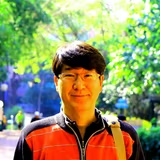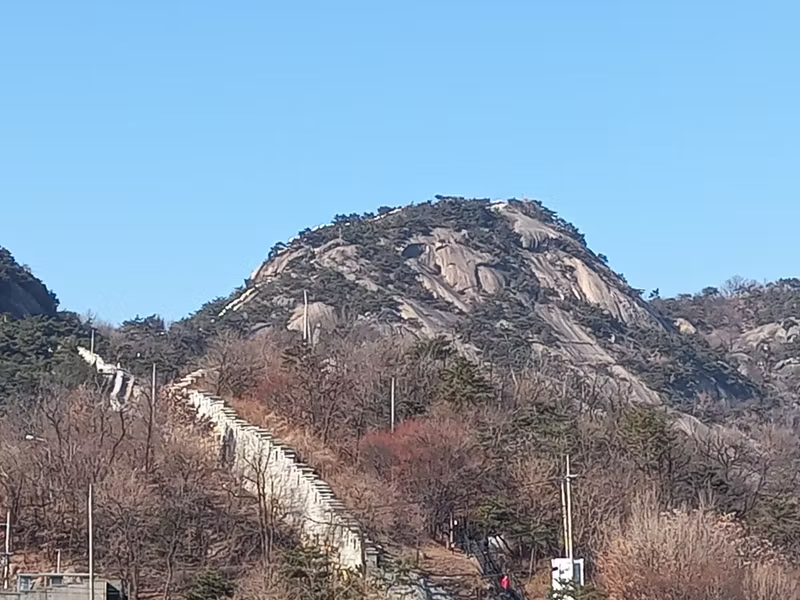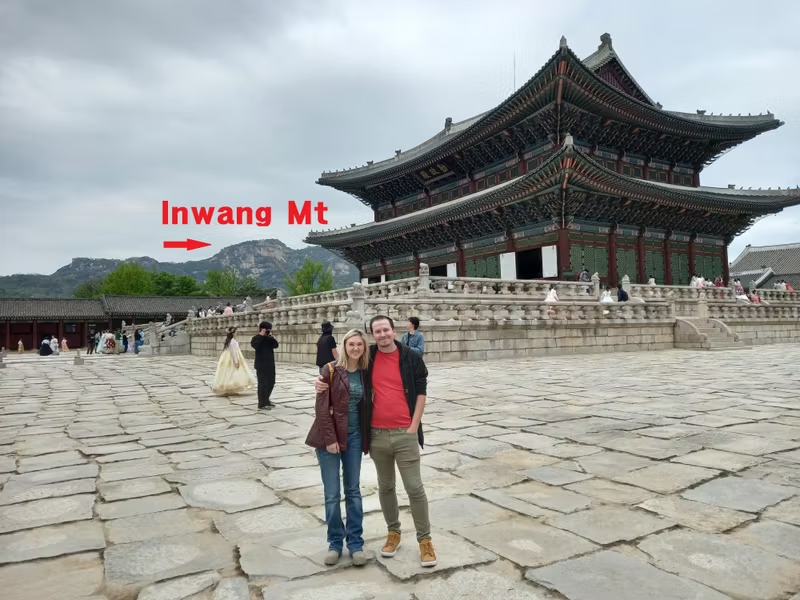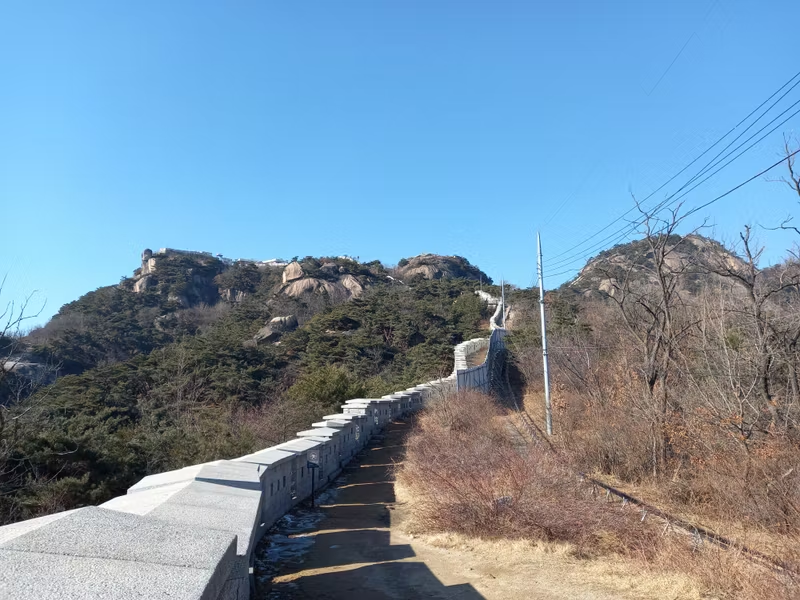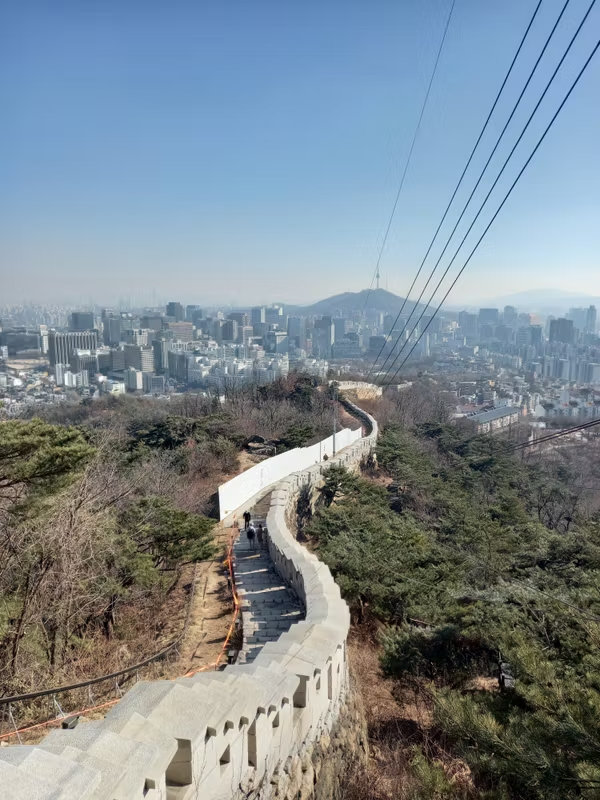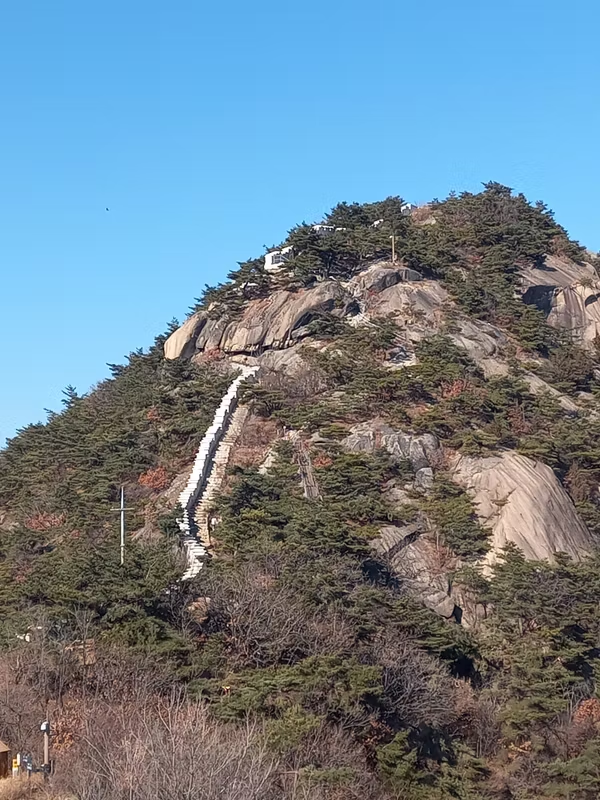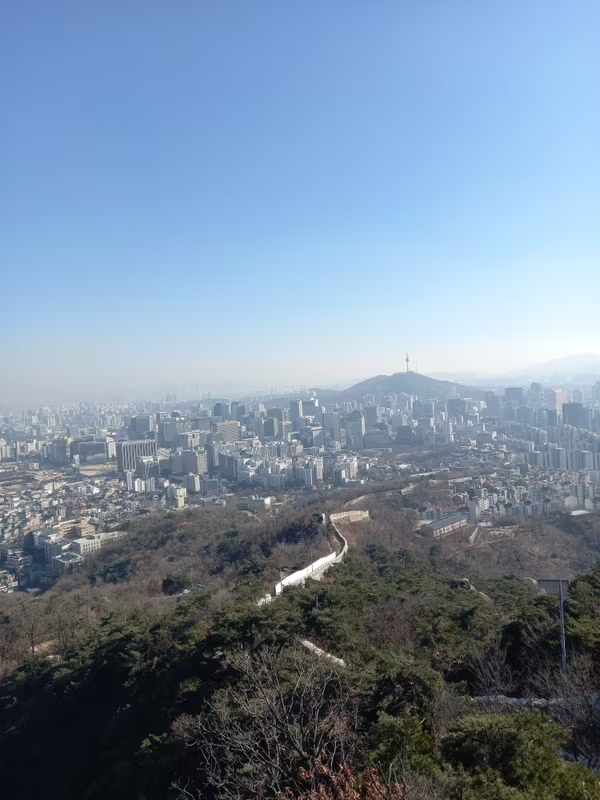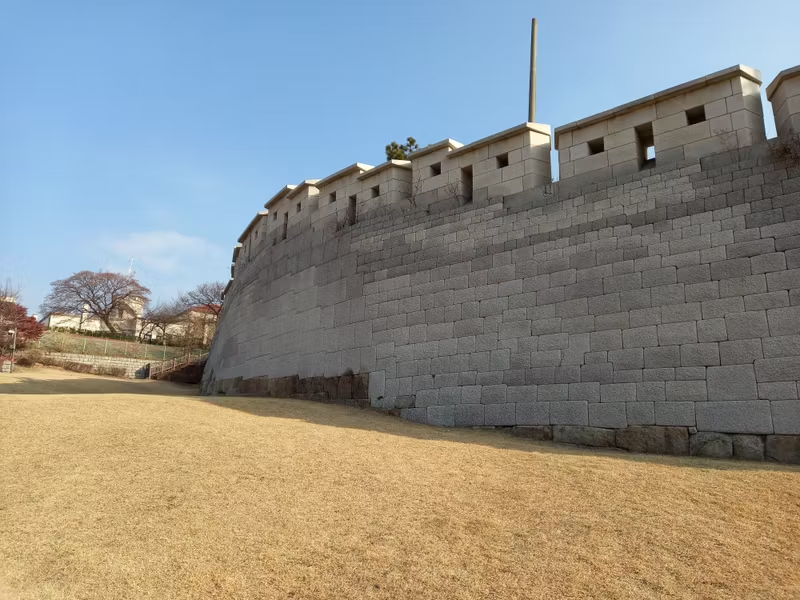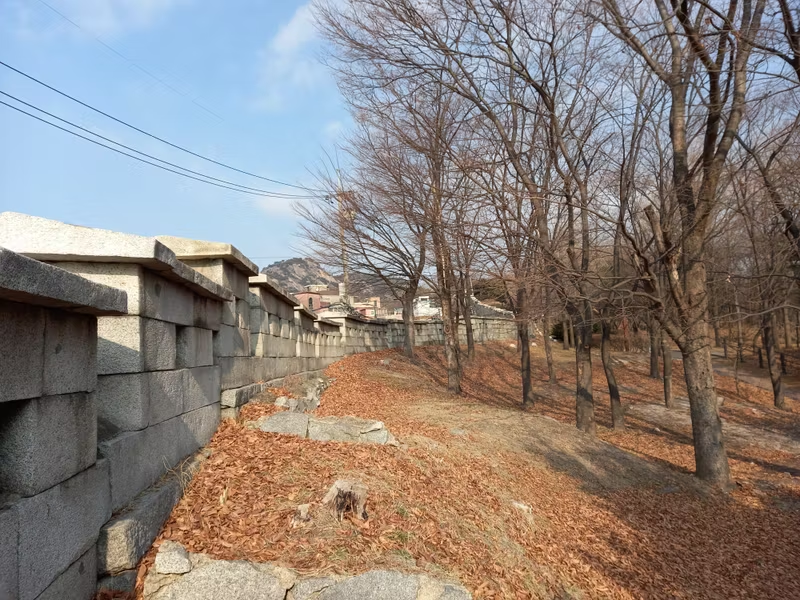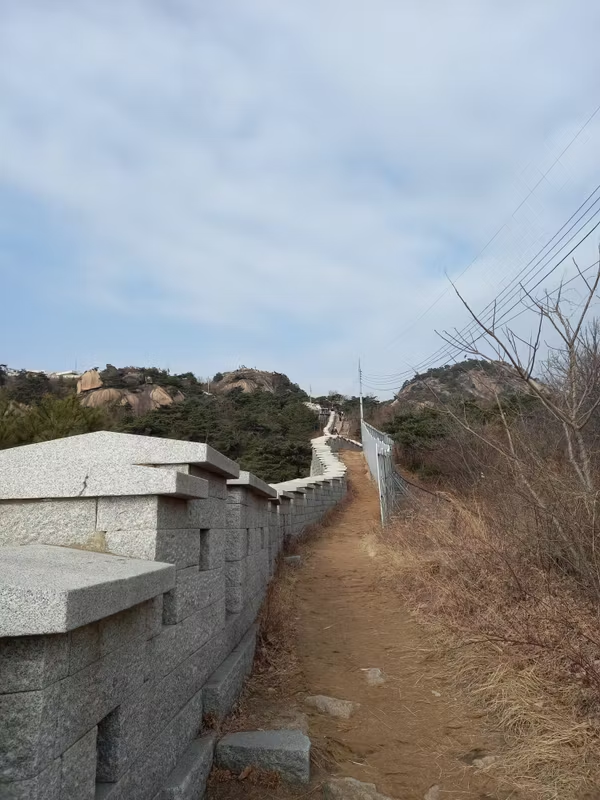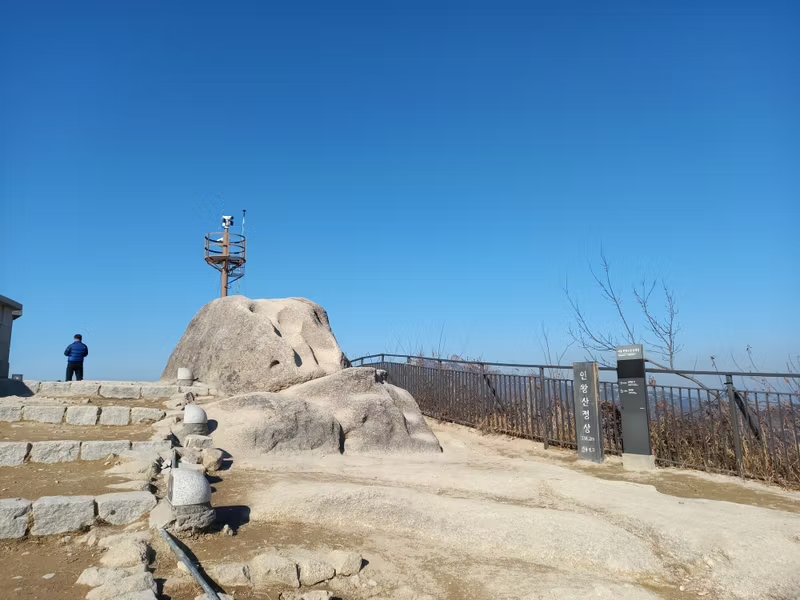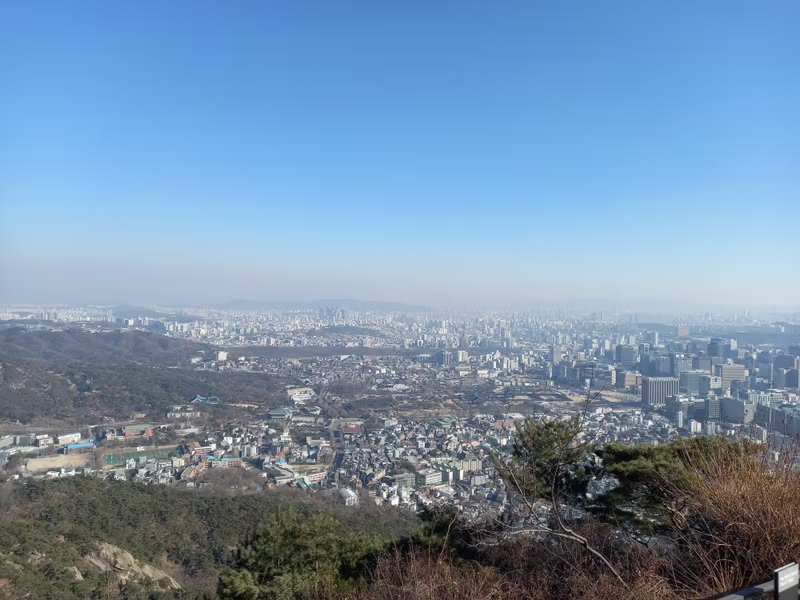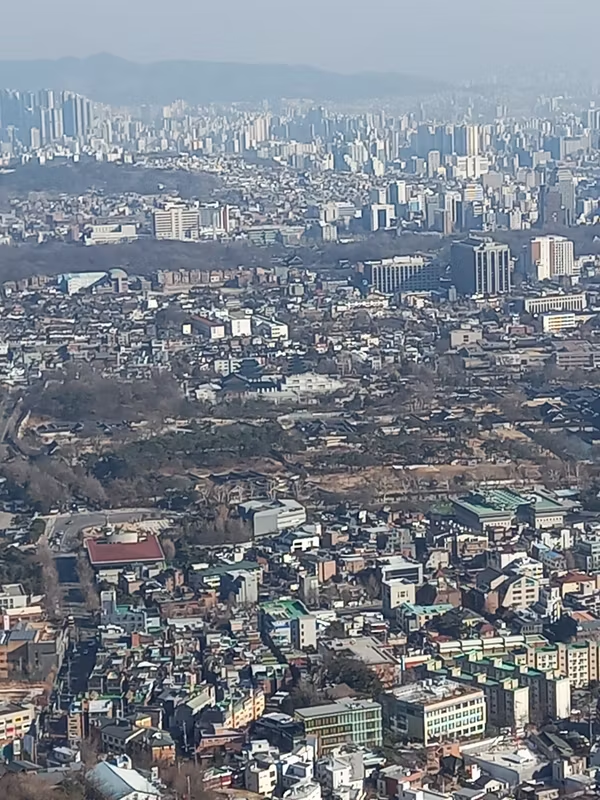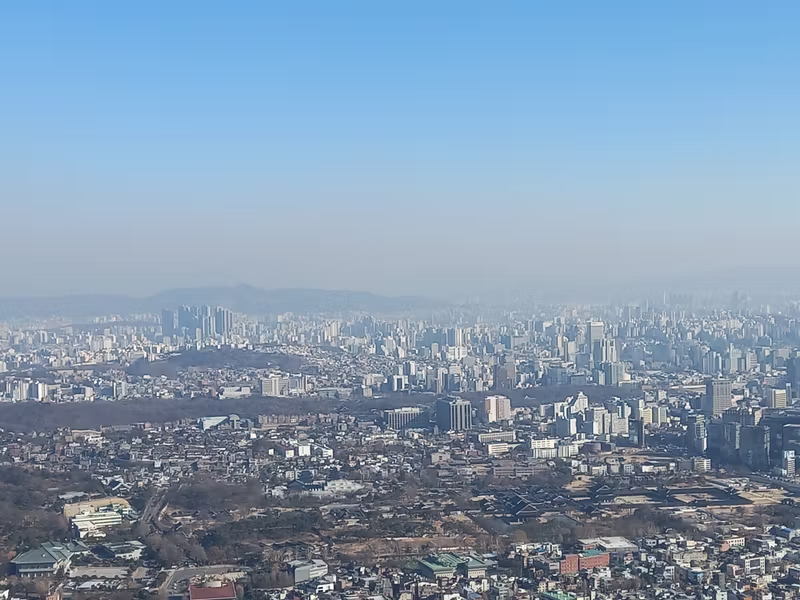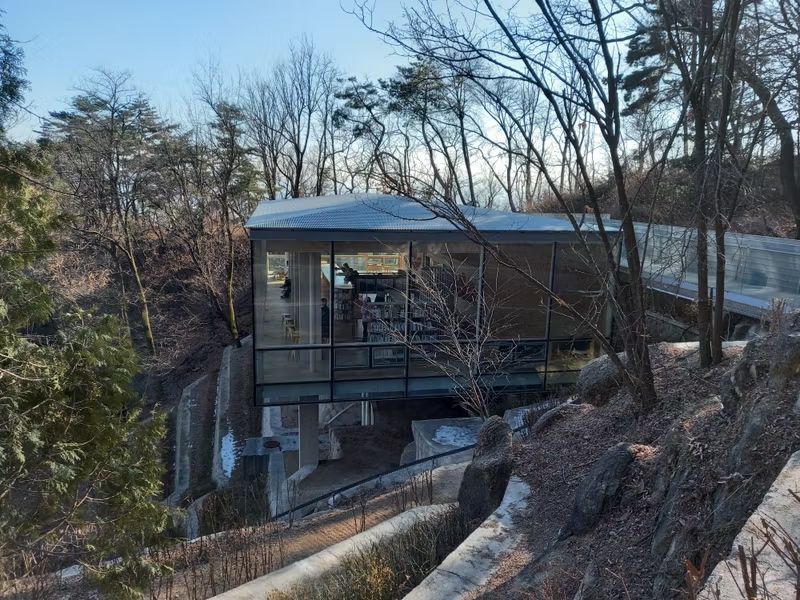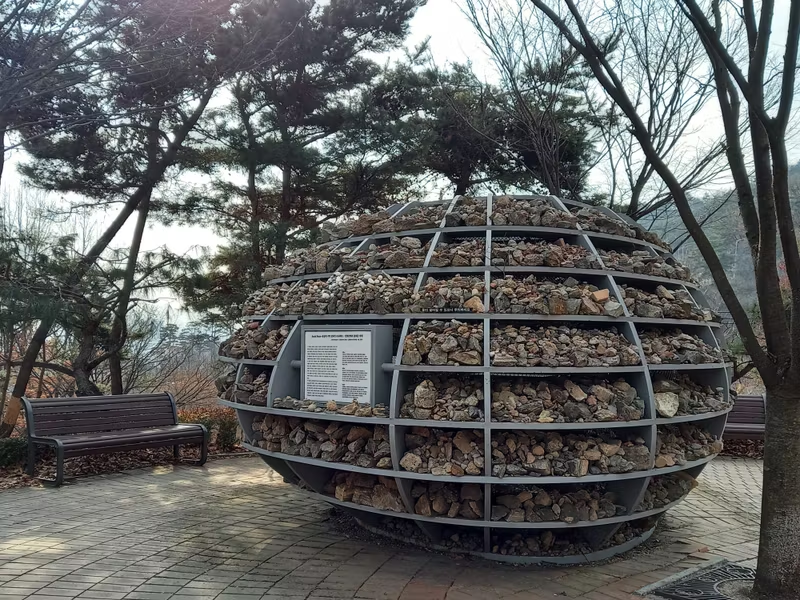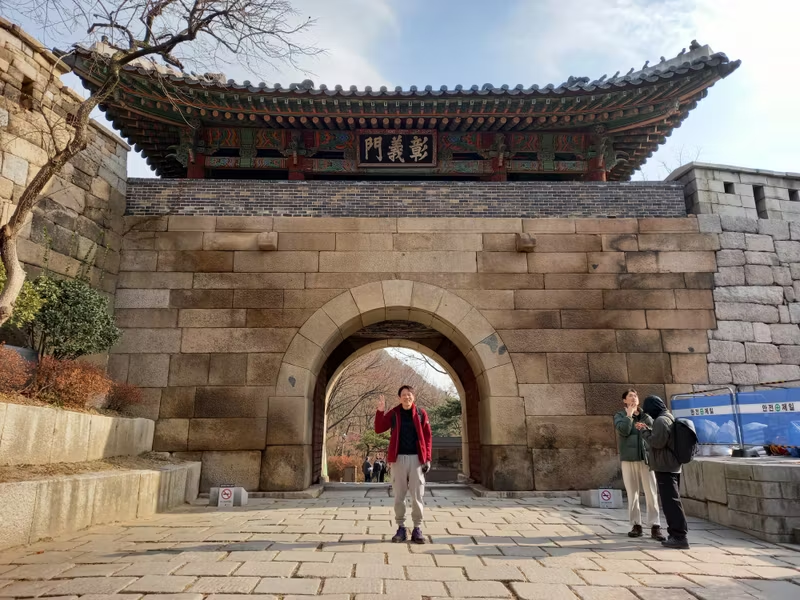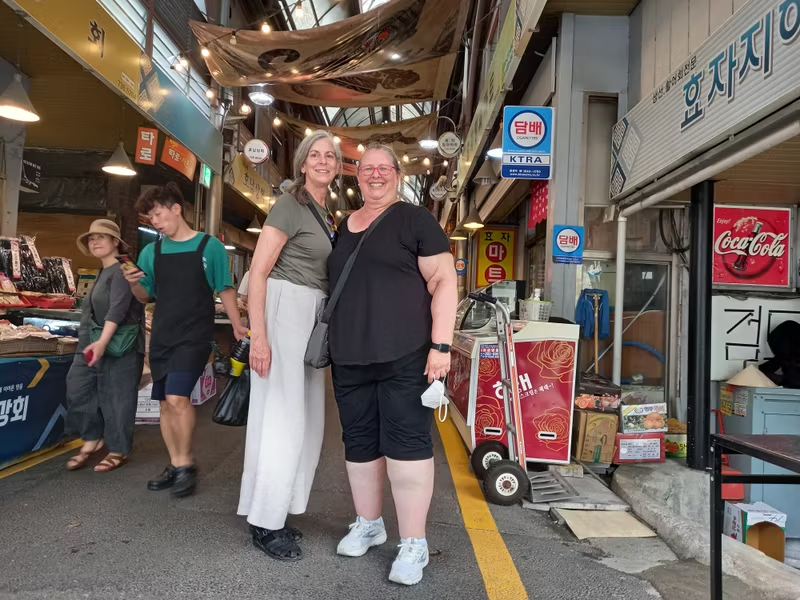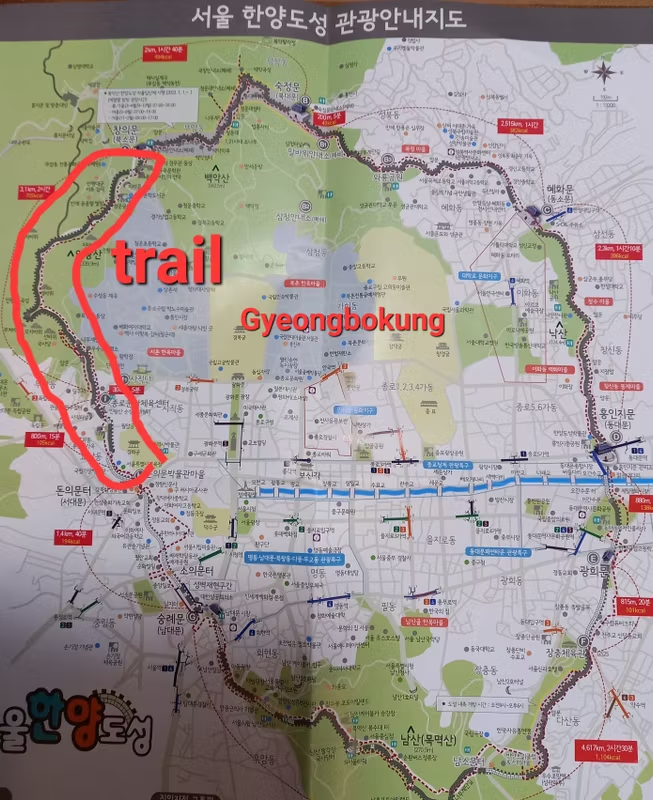3 hours hiking to Inwangsan Mt. along fortress wall of Seoul
Hiking along 4km of western part of Seoul Fortress wall on Inwangsan Mt, with stunning view of Seoul.
Located in the middle of downtown Seoul and just next to Gyeongbokgung palace.
Inwangsan Mt (338.2 meters) is an attractive hiking destination where you can enjoy view of central Seoul like a picture and relax in a pretty cafe or experience of traditional market after hiking. Without a high altitude, Inwangsan Mountain is the best mountain to enjoy leisurely hiking.
Itinerary
This itinerary can be customized to meet your needs and preferences. Send me a message with your requests!
Meeting Point
Gwanghwamun square
- Gwanghwamun square is located in front of Gyeongbokgung palace. It is center of Seoul. Meeting place is infront of King Sejong statue.
09:30~10:00: Moving to Donuimun museum village
10:00~10:30: Moving to entrance path of Inwangsan Mt.
10:30~11:00: Hiking to peak of Inwangsan Mt.
11:00~11:30: Forest Rest House
Bananas are served as snacks. Lunch is not included.
11:30~12:00: Hiking to Changuimun gate – destination of hiking
12:00~12:30: Moving to Tongin market or café street in Seochon neighborhood
12:30: Tour ends at Seochon neighborhood
Ending Point
Seochon Neighborhood
Want to personalize this tour?
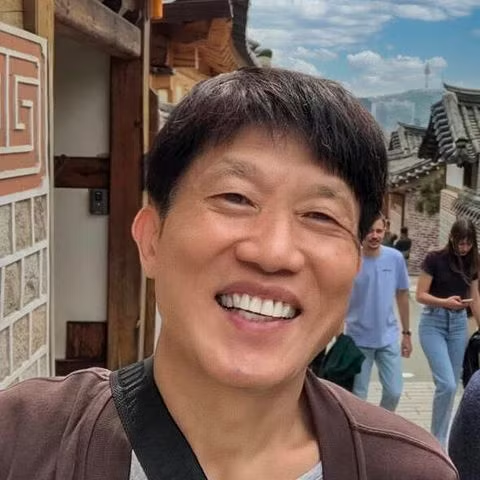
This tour can be customized to meet your needs and preferences. Click below to send me a message with your requests.
Inclusions & Exclusions
1. Guide fee
2. Bannanas : one per person
1. public transportation
2. food
3. drink
4. entrance fee
Tour Important Information
Hiking along uninterruptedly unfolding 4km of western part of Seoul fortress wall on Inwangsan Mt, with enjoying a panoramic view of Seoul.
It is located in the middle of downtown Seoul and just next to Gyeongbokgung palace, and an attractive hiking destination where you can enjoy view of central Seoul like a picture and relax in a pretty cafe or experience of traditional market after hiking. Without a high altitude, Inwangsan Mountain is the best mountain to enjoy leisurely hiking.
Inwangsan Mountain is a mountain that stretches Jongno-gu and Seodaemun-gu in Seoul, with a total area of 1.09 square kilometers. Inwangsan Mountain is made of granite at an altitude of 338.2 m. Inwangsan Mountain is a gentle incline, so even beginners can climb the top without difficulty.
Literally, Inwang means the god of the gatekeeper who protects both the stupa or the gate of the Buddhist temple and is the god of the gatekeeper who protects the laws of the Buddha.
Inwang mountain is a guardian mountain deity in Feng Shi theory: Inwang mountain was meant to protect the Joseon Dynasty. Inwang mountain located in west of Gyeongbokgung palace symbolize white tiger according to Feng Shi theory:
During Joseon Dynasty, Seoul became the capital city for the first time in Korean history. the territory of Hanyang/Seoul was only 17 square kilometers (16.7 km2). It is only 2.8% of current territory size of Seoul.
Seoul was chosen as capital of Joseon, because it is best location by Fengshui theory.
Territory of Seoul was determined by Fengshui theory as well. The territory of Seoul has been determined to be the inside of four mountains, that consist of Bukak mountain in north symbolizing of black tortoise, Naksan mountain in east symbolizing of blue dragon, Inwang mountain in west of Gyeongbokgung palace symbolizing of white tiger and Namsan mountain in south symbolizing of red vermilion bird. Fortress walls of Seoul were constructed along the lines connected 4 mountains to each other.
Important message from the supplier
My primary tourist destination is Seoul and metropolitan area, consisting of 5 palaces, Royal Ancestral Shrine, Bukchon Hanok Village, National Museum of Korea, War Memorial of Korea and other museums & galleries and contemporary architectures, and Namsan Mt. with N-Seoul Tower, traditional & trendy market places such as Gwangjang market & Hondae street, and also Korean Folk Village & DMZ tour.
Cancellation Policy
- Free cancellation - 8 days prior to meeting time
- 50% Refund - 3 to 7 days prior to meeting time
- No Refund - Within 2 day(s) prior to meeting time
About Tour Guide Paul K.
Hello everyone, I am Paul, a tour guide in Seoul. I am English tour guide certified by Ministry of Culture & Sports & Tourism with indepth experiences over 150 tours for international tourists.
I provide the professional and reliable tour guide service for international tourists, based on the knowledge of Confucianism, that is the spirit of Joseon Dynasty. Tourist attractions in Seoul are reflected on Confucianism. Seoul is a fascinating destination that seamlessly blends the old with the new. I'm excited to show you some of the best things to make your trip fun and excited, through my deep knowledge about culture and history of Korea and exuberant experiences as tour guide.
My primary tourist destinations are located ii Seoul and metropolitan area, consisting of 5 palaces, Royal Ancestral Shrine, Bukchon Hanok Village, National museum of Korea, War Memorial of Korea and other museums & galleries and contemporary architectures, and Namsan Mt. with N-Seoul Tower, traditional & trendy market places such as Gwangjang market & Hondae street, and also Korean Folk Village & DMZ tour in neighboring cities.
Alongside, I am specialist for hiking to Bukhansan Mt. and Inwangsan Mt. located in downtown Seoul, where you can enjoy beautiful natural sceneris and stunning view of Seoul.
Center of culture and tour is architecture. Architectural style represents spirit of times. We can see as much as we know about spirit of times. Without knowledge of spirit of times, we cannot fully appreciate beauty and value of traditional architecture. Confucianism was the spirit of Joseon Dynasty. Gyeongbokgung represents Confucianism. Confucianism culture of Joseon Dynasty is unique characteristic of Korean culture, compared to Chinese, Japanese and European culture. Hence, my tourist information is based on Confucianism.
With my deep knowledge of Korean culture & history, you can enjoy your tour in Korea.
Thank you for your interest!
As your guide, I hope to see you soon in Seoul!
Reviews
Jennifer R.
Gyeongbokgung, Bukchon Village, Gwangjang market, Folk Museum
“Fantastic experience! ”
I had the pleasure of having Paul as my guide for my first visit to Korea. The tour met all my expectations and more, thank you Paul! Paul is very responsive and went out of his way to travel to my hotel for an hour to pick me up as I wasn’t familiar with travelling in Seoul. His knowledge of Confucianism, Joseon Dynasty history & architecture was exceptional. This really provided insight to Korean culture both historically and as it is now, which enabled me to truly perceive the beauty and fully appreciate the sites and scenes we visited together. He’s such a fun and considerate guide, and we had such great conversations about various different cultures, life, and personal experiences. Paul also has insider knowledge of great spots and hidden places for the best photos (changing of guard, Hanok Bukchon), 1000won coffee (delicious!), food to aim for (at Kwangjang market). Thank you Paul for such a great experience, I hope we will meet again and appreciate your motivation to share the true beauty of Seoul!

Paul K.
Guest’s good review is the best reward and encouragement for my commitment to tour! Our tour is exploring of Korea’s unique cultural identity and beauty! Architecture is the center of culture and center of tour. Architectural style represents spirit of times. Confucianism is spirit of Joseon Dynasty. Confucianism culture of Joseon Dynasty is unique & differentiated characteristic of Korean culture, compared to Chinese and Japanese. Eventually, we can understand the beauty and value of traditional architecture consist of architectural feature, its historical significance and spirit of times. But without the basic information, tourists are just fascinated by superficial beauty of the buildings and places. Through tour, we explored Korea's unique cultural identity, focusing on architectural feature, historical significance and Confucianism, the spirit of Joseon Dynasty.
Pamela D.
2 days walking tour to highligh of Korean traditional culture in Seoul
Customized
“Historical Seoul - 2 day itinerary ”
Very good two-day tour of major Seoul sites to illuminate Korean history and culture, also with enjoyable stops for Korean food. A knowledgeable guide and well prepared Al &Pam

Paul K.
Thank you for your good review! Guest’s good review is the best reward and encouragement for my commitment to tour! Exploring of Korea’s unique cultural identity and beauty! Architecture is the center of culture and center of tour. Architectural style represents spirit of times. Confucianism is spirit of Joseon Dynasty. Confucianism culture of Joseon Dynasty is unique & differentiated characteristic of Korean culture, compared to Chinese and Japanese. Eventually, we can understand the beauty and value of traditional architecture consist of architectural feature, its historical significance and spirit of times. But without the basic information, tourists are just fascinated by superficial beauty of the buildings and places. Through tour, we explored Korea's unique cultural identity, focusing on architectural feature, historical significance and Confucianism, the spirit of Joseon Dynasty.
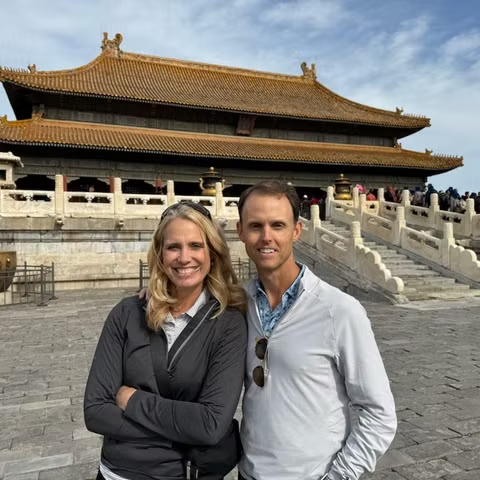
Vicky D.
2 days walking tour to highligh of Korean traditional culture in Seoul
Customized
“Full 2 Days”
Paul planned two full days to show us around Seoul. He was very helpful in teaching us how to use public transportation, eat cultural foods, and learning about Korean culture.

Paul K.
Guest’s good review is the best reward and encouragement for my commitment to tour! Exploring of Korea’s unique cultural identity and beauty! Architecture is the center of culture and center of tour. Architectural style represents spirit of times. Confucianism is spirit of Joseon Dynasty. Confucianism culture of Joseon Dynasty is unique & differentiated characteristic of Korean culture, compared to Chinese and Japanese. Eventually, we can understand the beauty and value of traditional architecture consist of architectural feature, its historical significance and spirit of times. But without the basic information, tourists are just fascinated by superficial beauty of the buildings and places. Through tour, we explored Korea's unique cultural identity, focusing on architectural feature, historical significance and Confucianism, the spirit of Joseon Dynasty.
$150/ per group
More tours by Paul K.
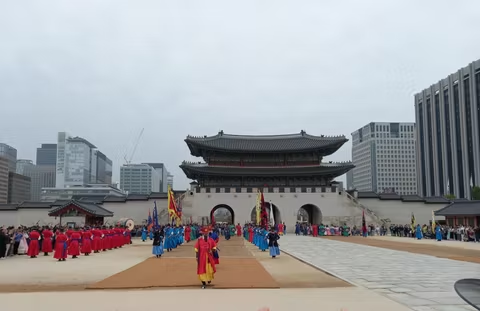
Gyeongbokgung,Bukchon,Gwangjang,N-SeoulTower,Hongdae
Exploring for Korea’s unique cultural identity! Tour features Gyeongbokgung palace - the most beautiful place and best architecture, Bukchon Hanok Village, Gwangjang market, N Seoul Tower, Hongdae street. Guide share information of Korean culture that helps guest fully appreciate beauty and value of Gyeongbokgung but entire Korean traditional culture. Gyeongbokgung is the most beautiful place and must-see architecuture that represent Korea's traditional culture.
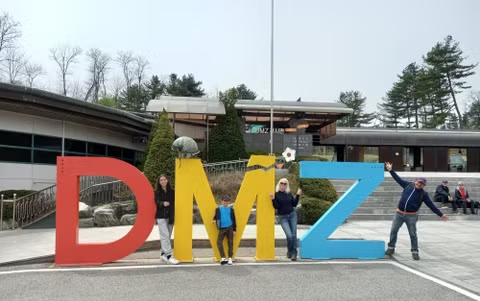
DMZ tour to 3rd tunnel, Imjingkak, Gamaksan Suspension Bridge
DMZ tour offers your exploring of the dark side of Seoul, featuring intense tensions, violent confrontations and the constant risk of war between North and South Korea. During DMZ tour, you will visit the 3rd Infiltration Tunnel to see the reality of North's threatening provocation and Imjingak to see the scars & sorrowful memories of the Korean War. On your way back to Seoul, you will visit Gamaksan to enjoy beautiful natural scenery.
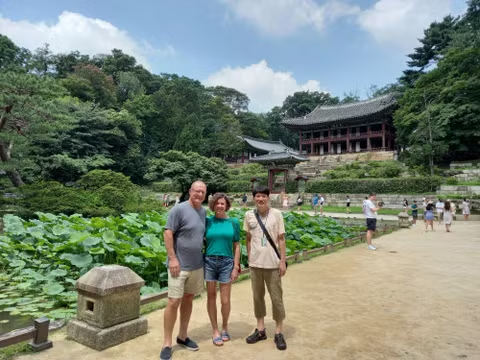
Changdeokgung, Bukchon, Gwangjang market, N Seoul Tower
Tour to Changdeokgung & Rear Garden, listed by UNESCO World Cutural Heritage, traditional Korean village, traditional food and whole view of Seoul. Tour feature highlight & essence of beautiful traditional culture and landscape at Changdeokgung, Bukchon Hanok Village, and traditional food at Gwangjang market, beautiful cityscape at Namsan Tower. Guide share information of Korean culture that help guest fully enjoy the beauty and value of traditional Korean culture as well as palace architecture.
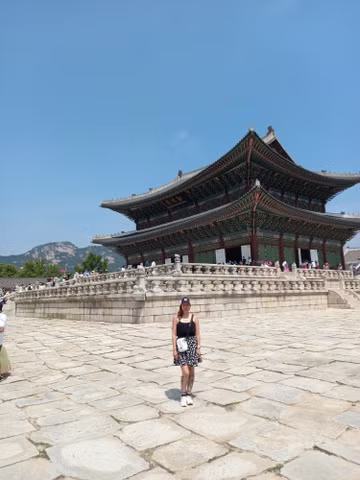
Gyeongbokgung, Bukchon Village, Ikseondong, Jogyesa temple
Tour of 4 hours to explore essence and highlight of traditional Korean culture from best of best palace, traditional Korean house village, traditional Korean folk culture. Tour features Gyeongbokgung palace - main palace of Joseon Dynasty & the most beautiful place and best architecture of Korea, Bukchon Hanok Village. Guide share information of Korean culture that help guest fully enjoy and appreciate the authentic beauty and value of traditional Korean culture as well as palace architecture.
Other Popular Nature & Outdoor Tours in Seoul
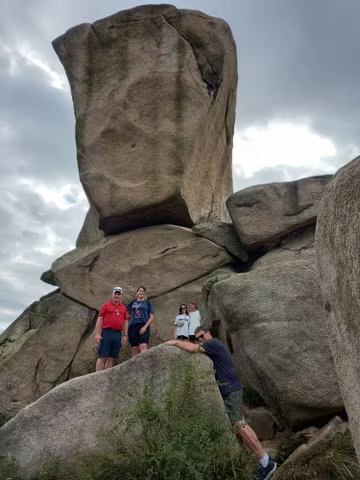
8 hours Hiking & Cultue tour to Bukhansan Mt
Exploring for Korea’s unique natural beauty! Located in the middle of downtown Seoul, Mt. Bukhansan (836.5 meters, 2,744 feet) is one of the most beautiful mountains in Korea, offering beautiful scenery and stunning views. This is one of 3 iconic natural landmarks of Seoul along with Han River and Mt. Namsan It was designated as Korea’s national park, in 1983., also is a cultural place which has long history and tradition.

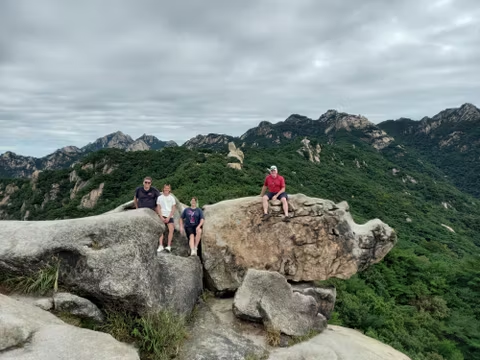
6 hours hiking tour to Bukhansan mountain
Bukhansan Mountain is one of the most beautiful mountains in Korea, showing the exquisite sceneries with oddly formed rocks and strangely shaped stones and stunning views of Seoul from its peaks. Located in the middle of downtown Seoul, Bukhansan mountain(836.5 meters, 2,744 feet) is one of 3 iconic natural landmarks of Seoul along with Han river and Namsan mountain. Bukhansan was designated as Korea’s national park, in Apr. 2, 1983.

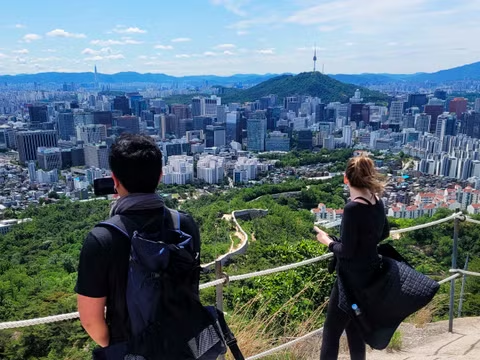
Easy hiking (Ansan, Inwangsan, Achasan or any other)
I love hiking! I hiked a lot of mountains in the world alone, and I've led a hiking club over 4 years. Now, I want to share this beautiful nature with foreign visitors! These are all easy trails. You can choose one of them. If you want any specific mountain, please let me know. I usually hike Ansan, Inwangsan or Achasan mountain. I don't hike fast as I love to feel trees and mountains. I'm sure once you hike with me, you'll like hiking in Korea as much as I do!
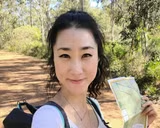
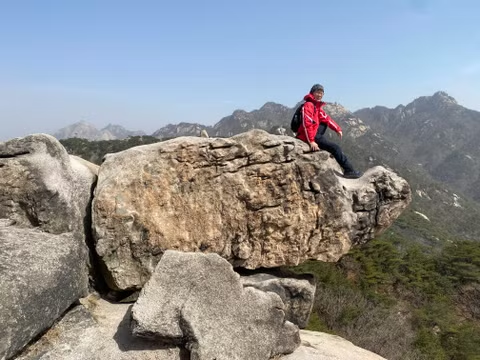
Bukhansan National Park, easy trekking.
Imagine! there is beautiful national park in Seoul, how wonderful it is. Our ancestor chose the capital city by feng shui(geomancy) so we have this kind of blessing. There are many different courses in the Mt. Bukhansan, I will design by your interest and ability. Then you will just enjoy a day in the mountain like locals.
